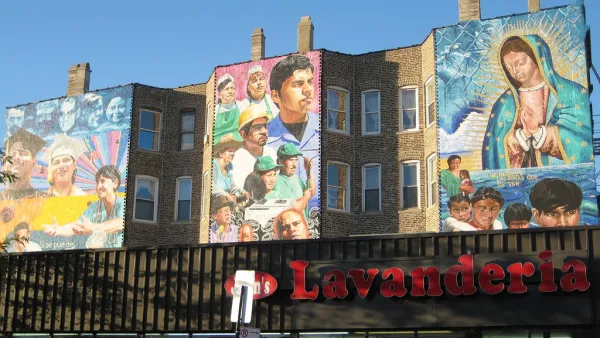A growing number of signs show major shifts in U.S. population growth—most emerged before the pandemic.

"Growth in the number of U.S. households during the 2010s slowed to its lowest pace in history, according to a Pew Research Center analysis of newly released 2020 census data."
An article by Richard Fry, Jeffrey S. Passel, and D'vera Chon shares news of the new analysis, explaining both causes and consequences for the data. Starting with causes, the article lists several long-term demographic trends:
- "A fundamental driver of household growth is population growth. The population residing in households (that is, those who do not live in group quarters such as dorms, prisons or nursing homes) grew by only 7.5% in the last decade, the slowest population growth since the 1930s."
- "Beyond population growth, another demographic trend also slows growth in the number of households: Multigenerational family living has been increasing. In 2016, 20% of the U.S. population lived in multigenerational family households, up from 12% in 1980."
Other trends like the share of Americans living alone are also explained in the article.
The article is less specific about the consequences of these trends, but predicts that the subpar growth of households will impact the demand for housing and durable goods like furniture and appliances. "The slowdown in economic growth over the 2010s is partly a reflection of weak household formation and low levels of home building," according to the article.
More from Planetizen on 2020 Census data findings:
- Where New Asian Residents Are Transforming New York City (October 2021)
- Census Data Reveal Increasing Density in the U.S.—Reversing a Two-Decade Trend (September 2021)
- News Brief: Census 2020 Population Data (August 2021)
- 2020 Population Growth Rates for the 50 Biggest U.S. Cities (July 2021)
FULL STORY: U.S. household growth over last decade was the lowest ever recorded

National Parks Layoffs Will Cause Communities to Lose Billions
Thousands of essential park workers were laid off this week, just before the busy spring break season.

Retro-silient?: America’s First “Eco-burb,” The Woodlands Turns 50
A master-planned community north of Houston offers lessons on green infrastructure and resilient design, but falls short of its founder’s lofty affordability and walkability goals.

Delivering for America Plan Will Downgrade Mail Service in at Least 49.5 Percent of Zip Codes
Republican and Democrat lawmakers criticize the plan for its disproportionate negative impact on rural communities.

Test News Post 1
This is a summary

Test News Headline 46
Test for the image on the front page.

Balancing Bombs and Butterflies: How the National Guard Protects a Rare Species
The National Guard at Fort Indiantown Gap uses GIS technology and land management strategies to balance military training with conservation efforts, ensuring the survival of the rare eastern regal fritillary butterfly.
Urban Design for Planners 1: Software Tools
This six-course series explores essential urban design concepts using open source software and equips planners with the tools they need to participate fully in the urban design process.
Planning for Universal Design
Learn the tools for implementing Universal Design in planning regulations.
EMC Planning Group, Inc.
Planetizen
Planetizen
Mpact (formerly Rail~Volution)
Great Falls Development Authority, Inc.
HUDs Office of Policy Development and Research
NYU Wagner Graduate School of Public Service




























